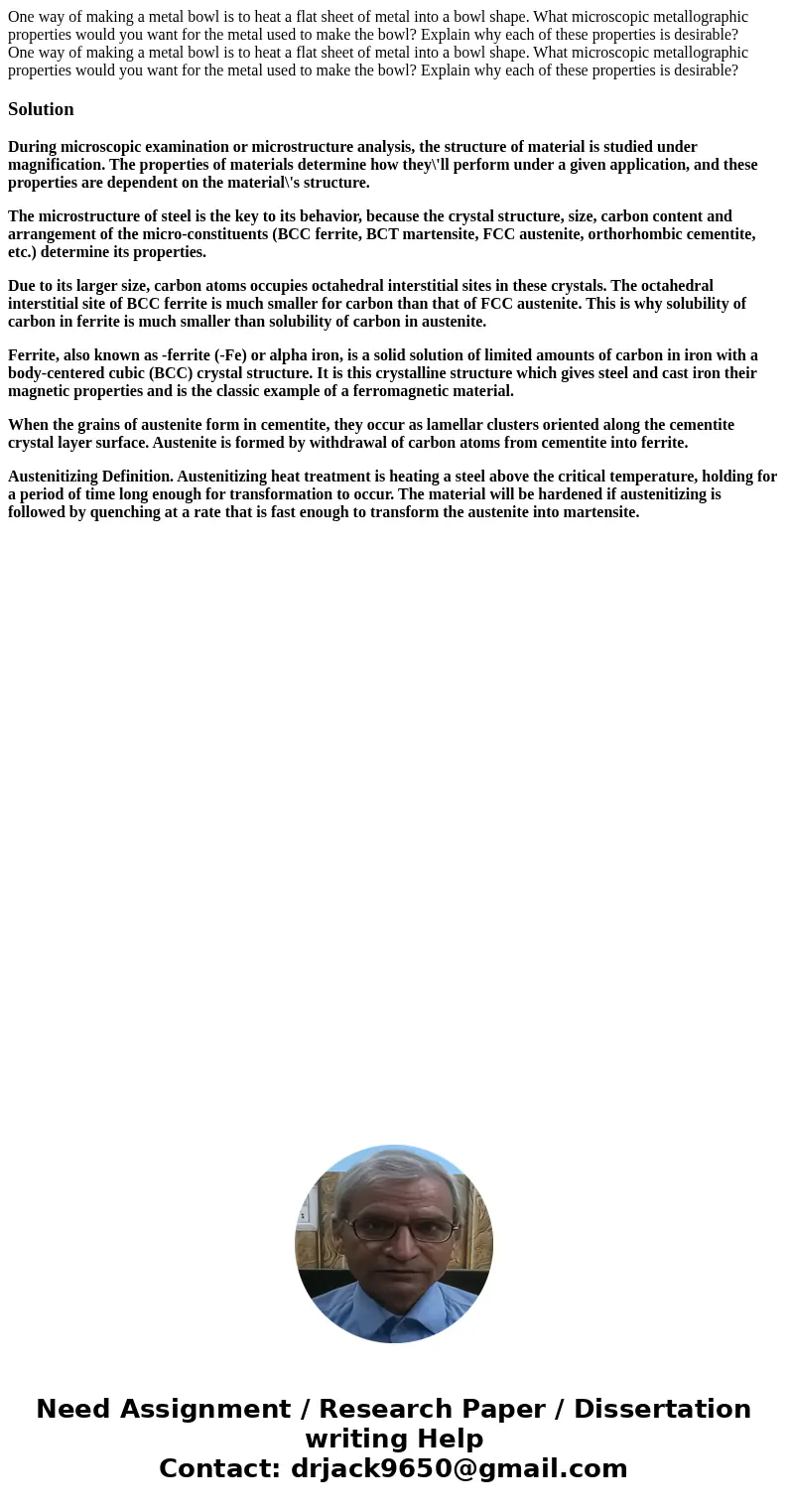One way of making a metal bowl is to heat a flat sheet of me
Solution
During microscopic examination or microstructure analysis, the structure of material is studied under magnification. The properties of materials determine how they\'ll perform under a given application, and these properties are dependent on the material\'s structure.
The microstructure of steel is the key to its behavior, because the crystal structure, size, carbon content and arrangement of the micro-constituents (BCC ferrite, BCT martensite, FCC austenite, orthorhombic cementite, etc.) determine its properties.
Due to its larger size, carbon atoms occupies octahedral interstitial sites in these crystals. The octahedral interstitial site of BCC ferrite is much smaller for carbon than that of FCC austenite. This is why solubility of carbon in ferrite is much smaller than solubility of carbon in austenite.
Ferrite, also known as -ferrite (-Fe) or alpha iron, is a solid solution of limited amounts of carbon in iron with a body-centered cubic (BCC) crystal structure. It is this crystalline structure which gives steel and cast iron their magnetic properties and is the classic example of a ferromagnetic material.
When the grains of austenite form in cementite, they occur as lamellar clusters oriented along the cementite crystal layer surface. Austenite is formed by withdrawal of carbon atoms from cementite into ferrite.
Austenitizing Definition. Austenitizing heat treatment is heating a steel above the critical temperature, holding for a period of time long enough for transformation to occur. The material will be hardened if austenitizing is followed by quenching at a rate that is fast enough to transform the austenite into martensite.

 Homework Sourse
Homework Sourse